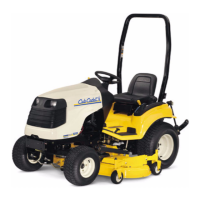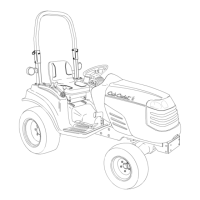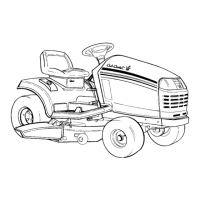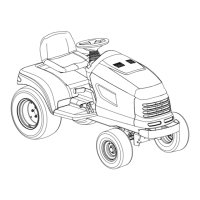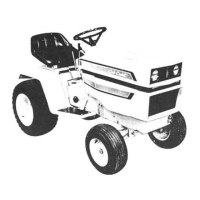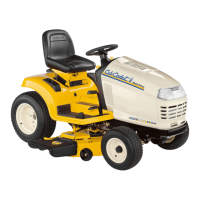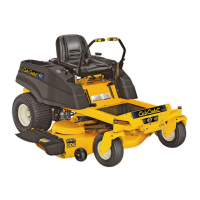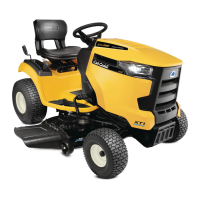Domestic Series 7000 Hydraulics
9
5.4. The charge pump should generate between 70
and 150 PSI (4.8 to 10.3 Bars) @ 1,200 RPM.
See Figure 5.4.
5.5. As the RPM is increased to the governed top no-
load sped, the pressure may increase someh-
wat. If pressure goes down as engine speed
increases, turn-off the engine and determine the
cause. See Figure 5.5.
5.6. Operate the system at full input and output
speeds in both directions,and confirm that
charge pressure is maintained.
Figure 5.4
Figure 5.5
5.7. Assuming the supply to the pump is good, low
pressure or a complete lack of pressure at this
port indicates a charge pump that is not working.
5.8. The charge pump could be disabled by a stick-
ing charge pump relief valve. See Figure 5.8.
• This valve is located under the hexagonal cap
next to the pressure test port for the charge
pump.
• The valve consists of a light compression spring
and a ball that seats in a bore.
• The cap can be easily removed to inspect the
valve using a 5/8” wrench. Failure of this valve
would be unusual, but if the ball fails to seat,
charge pump pressure will leak off.
NOTE: The charge pump is not available sepa-
rately through Cub Cadet.
NOTE: The reason for testing the charge pump
is to help distinguish between a problem within
the hydrostatic drive and a problem that lies
elsewhere in the drive system.
Figure 5.8
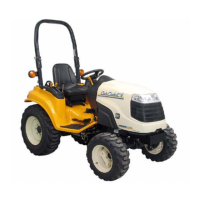
